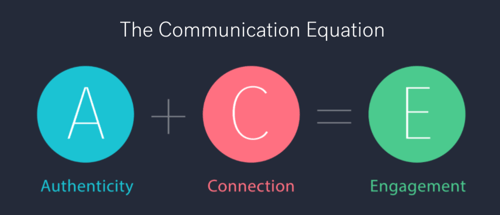We’ve all heard it, it may have been at a conference with thousands of attendees or in a small office meeting, a TED talk we watched online, a recent seminar... It could even have been during the inflight safety announcements before take off. It’s that one presentation that we forgot was even a presentation. It was funny and engaging, we couldn’t wait to hear what they would say next and it left us wondering - How can I speak like that?
Presentations and public speaking bring out a wide range of emotions. The more extroverted of us may feel a small flutter of nerves in their chest and then push it down through raw determination. Whereas others amongst us instantly feel our palms becoming sweaty and fear rising in our throats. Whichever camp we fall in, we’re all looking for ways to improve our communication skills. We’re looking to overcome concerns of being judged by a wide audience.
If you've ever asked yourself how can you improve presentation skills, read our 21 presentation tips - these can be used by a wide audience, ranging from professionals to students.
1. Make a good first impression
This is always the first question asked so there are endless sources of information on what to wear for a presentation and what it usually comes down to is to wear something that’s clean and feels comfortable. What’s talked about less is how you actually look. From the moment you appear as the presenter, whether that be standing to take your position at the front of the room, walking onto the stage or entering the virtual presentation, your audience is making all kinds of judgments before you’ve had a chance to say a word. This can sound intimidating but it’s actually a good thing! The energy you convey through your posture and your confident body language, will be registered by your audience even before your hair and wardrobe.
2. Play with intonation and melody
How we speak is often not as important as how we sound when we say it. You want what you say to pull your audience in. Why is it that one person giving a presentation can sound like fingernails scraping down a blackboard, while another is completely engaging? Quite simply, one is making you work very hard as a listener, whereas the other is doing all the work for you. Much of this work is made up in how you sound, your intonation, emphasis and melody.
Here's a video of Emma explaining this in more detail:
3. Don't forget to pause
Pausing is an important and versatile tool. It allows breaks between tones and topics, it allows time for what you’ve said to resonate with the audience or leave or make an impact before your next words. Use pauses as ‘mini beats’ to divide up your thoughts, maintain control and interest.
4. Know what you want to say
To avoid waffling and going off topic, clearly define the objective of your presentation before you even start thinking about the content. Think about what effect you want to have on your audience. Do you want them to come away feeling inspired? Delighted? Motivated? Do you want them to buy your product, vote for you or change their life in some way? Every slide and spoken point should clearly refer back to the objective.
5. Have structure
Beginning, middle and end. It’s a simple framework that can help you feel less nervous. the introduction should be about 10-15% of your speaking time, the body around 75%, and the conclusion only 10%. Once you have your structure, focus on the three key points that you really want to deliver to your audience and keep these in mind when you’re presenting. People usually have a much longer list that this, but if you can keep it to three there’s more chance of you really making sure these messages get across and delivering an engaging presentation.
6. Deliver your points
This idea of delivery features a lot in our books and in our Effective Communication course and presentation skills training, and it is so important. When we speak, if we look around the room rather than at the audience or listener, then the message is: ‘I’m not that bothered about you’. If we direct our energy, our voices and eye contact to the listener then the message is: ‘I care about you and I want to make sure you hear me and receive these ideas’.
So how do you ‘deliver’? It’s really simple. You look with intention at your audience or an individual at the final word or two of each major thought, unit, or sentence. It’s very different from looking up in the middle of a sentence (the message of which is ‘I’m checking that you are still listening’) – so please avoid doing that if you can. Instead, if you connect with your audience on those final words of a thought or sentence, the message is clear: ‘I value what I am saying, I value you. And I want you to know about it.’ Now we’re cooking with gas!
Effectively delivering is when your intention, voice and eye contacts combine to literally place your ideas in the hands of your listeners.
7. Practice does make perfect
This seems obvious, but it is often overlooked; there is nothing like practice to get you ready for a big presentation. If you're preparing for an in-person presentation, practice out loud, in front of a mirror or with a colleague. If you’re preparing for an online presentation - even better - actually set up a Zoom meeting and record yourself presenting. And then be brave enough to watch yourself back - you will be amazed by what you notice. Mark your notes with key words and ideas that you want to really deliver. If you want to give a persuasive presentation, make sure you're using the right words - 'instantly', 'free', 'quick win', 'you' are all simple but effective examples of this.
8. Transform nervous energy into enthusiasm
Some of history’s greatest speakers were terrified of public speaking, including Abraham Lincoln and Mahatma Gandhi. So if you're wondering how to be confident in public speaking you’re in good company. Fortunately, when you think of old Abe or Gandhi, you likely think of their passion and not their nerves. This is because their need to speak was greater than their public speaking anxiety. To channel their skills in public speaking and confidence, look at your prepared remarks and ask yourself:
-
What are my goals for the audience?
-
What am I giving them?
-
Will they be moved?
-
Will this make them feel relief or pain?
Continually come back to these places in your speech that really deliver on these goals and tune it to why they’re needed. For more on this, see our 5 Tips To Overcome Public Speaking Nerves.
Watch our Principal Coach Kate Bowes-Renna on how to be confident in public speaking and tackle glossophobia:
9. Make eye contact, especially online
We know how important eye contact is, all on their own our eyes can communicate with others. And this is no different in a presentation. Imagine someone looking up in the middle of their text, and then looking down at the end of their sentence to grab the next sentence. This communicates entirely the wrong statement - that the speaker is checking to see if people are still listening.
You might think that you can’t make eye contact when you’re presenting online, but this is when it is even more important. When you are presenting to people online, make sure you look at your camera - because that’s the way they’re going to feel your eyes on them. It’s that simple!
10. Curate your square

When you’re online your background really matters. This small square, or rather rectangle, is all you have to showcase yourself and make yourself memorable, so give them something recognisable and take some time to curate your background. Add a plant or flowers, books or pictures - but make sure you have something that relates to you and gives the impression you want. We are all about authentic communication so we don’t recommend using a fake or computerised background - you don’t want people to think you’ve got something to hide.
11. Be early
The attitude you start the presentation with will have a direct impact on how your audience engages. Imagine you arrived late and rushed, your clothes dishevelled, hurriedly preparing your notes or any props. Now imagine you’ve arrived in plenty of time to recover from your commute, your clothes and presentation notes are neat and orderly - you’ve even had a chance to check your Zoom link and how to share your screen. Chances are, your audience is more likely to feel that you are warm, honest and open, in the second scenario.
12. Introduce yourself
Sure the Chair or previous speaker introduced you, but think of it like an ice breaker. Whenever you meet someone, you usually exchange names. Now while it would be appropriate to exchange names with everyone there to hear your presentation, you can make it easier for your audience by personally introducing yourself, followed by your presentation subject.
13. Connect with the audience
You may think you are the focus of your presentation. You will be the one speaking after all. But we don’t speak for ourselves, we already know what we think. We speak for other people. Which means your audience is the focus of your presentation. Use this as the foundation by which you can build a connection with your audience. The best way to tune into this head space is to tune in to the uniqueness and complexity of your audience. Don’t worry if it’s made up by a diverse array of people, there will still be unifying factors that have brought this audience together. Aim to connect with that factor.
14. Our Communication Equation A + C = E
If you’ve been reading our blogs and watching our videos for a while, you probably already know about ACE - Authenticity + Connection = Engagement. But what does that actually mean and how do you use it in a presentation? The idea is simple, really. If you, as the speaker, are authentic and you feel a connection with you listener, then as a result, you get engagement. And if the audience or listener is engaged, then that’s good communication right there. You’re giving a rousing presentation.
15. Take deep breaths
The way we breathe has changed, and not for the better. We take in air by filling our lungs to around 80% capacity and then we slowly release that air. This serves an important role in how we communicate as we speak on the exhale. But with the challenges of modern life, we’ve begun taking in shallow breaths and exhale more rapidly. Not only has this impacted our pitch and tone, it also affects our nervous system, leading to a perpetual fight or flight chemical cocktail in our bloodstream. Not ideal for presentation speaking or calming the nerves you’ll be feeling beforehand. This is why it’s so important to take time to breathe correctly. A good rule of thumb is to remember the four fours - breath in for four seconds, hold for four seconds, exhale for four seconds, hold for four seconds, repeat as needed.
16. Smile

Genuine smiles are good for making instant positive impressions. We like genuine smiles and we feel drawn to them and the information conveyed when we see it. You may worry that smiling during your presentation will undermine your authority, but think again of that amazing presentation we talked about at the beginning? Was it their authority that made you listen? Or was it how engaged you were with what they said? Plus don't forget smiling is good for you.
17. Ask questions
If possible. Not only does asking questions give you a chance to breathe and collect your thoughts but provides the added benefit of the opportunity to listen and engage with your audience. An important metric to gauge their interest and participation. Questions are also powerful rapport builders because questions mark the beginning of a connection.
18. Add colour to your voice
Before humans developed complex languages, we communicated by sounds and the tones of our voice did most of the work. This hasn’t changed for our subconsciousness. Our voice can actually be a smoking gun, giving away to exactly how we feel to our listeners. The great news is, with practice we can manipulate the tones of our voice. Just as a smile can be heard in someone's voice, so can other emotions. Imagine what you want your audience to feel when you say a certain sentence and then practice that sentence while feeling that emotion.
19. Drink water
A bit like asking questions in that it gives you the opportunity to collect your thoughts, fill space (don’t over use it) but with the added bonus of hydration.
20. Don’t forget to add some spice!

In order to connect with people, we need to show them a bit of ourselves, to make things personal and ideally infuse our storyline with a palpable sense of emotion and humanity. So think about how you can incorporate real stories and anecdotes into your presentation. It will make you much more memorable and help build engagement with your audience.
21. Be authentic
Authenticity is the foundation of good public speaking skills. You can’t be a successful public speaker without it. Chances are, if you think back on all the amazing presentations you’ve seen, authenticity was what made it stick. Our Principal Coach, Jamie Chapman, offers some great tips on authenticity in presentations in this fantastic video:
So there you have it, 21 tips to improve your presentation skills.
Maybe you don’t need all of them, maybe you do, either way a refresh is always helpful for shaking up our communication.
Why does the Serlin Method™ work where so many others fail?
That's easy to answer. Our method is simple. We give you a toolbox. Once you've learnt each tool, it's yours for life. Each tool is a simple - easy to remember - intelligent gem that has profound impact. Which means when you're armed with our toolkit you are armed and ready for any communication situation:
-
How do I build rapport?
-
How do I deliver bad news?
-
How can I be articulate when speaking off the cuff?
You name it, we can help with it.
It goes like this... we film you. We teach you a tool. We film you again. We watch back. The tool is simple, but the impact of the tool is profound. And you will want to keep going, learning more great tools to become an effortless presenter and outstanding communicator.
I know this works because this is exactly how I - and countless others - have changed their presentations from being ok and not always consistently, to brilliant and consistently compelling.
Sound good? The next step is to Book Your Taster Session with one of our expert coaches today - they will discuss your goals and objectives with you and you will learn some of these simple tools for success in your first hour.



